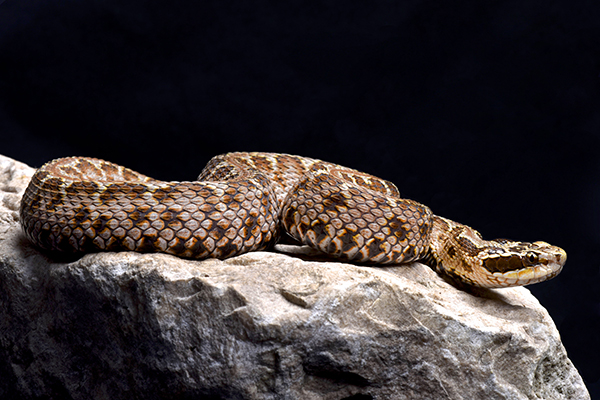
LPS triggers inflammation by promoting the expression of pro-inflammatory molecules, such as TNF-?, interleukin-1B (IL-1B) and IL-6. It also activates signaling pathways (NF-kB and MAPK) that increase the expression of cyclooxygenase-2 (COX-2), an enzyme heavily involved in inflammation. Collectively, these events contribute to multiple organ failure in sepsis patients.
In addition, LPS enhances the production of free radicals, which results in oxidative stress. This promotes the death of cardiac muscle cells, which eventually leads to heart failure. Scientists believe that suppressing the production of pro-inflammatory molecules will help prevent septic shock while replenishing sepsis patients’ antioxidant levels will prevent LPS-induced heart dysfunction.
In a recent study, researchers at Wannan Medical College in China examined the potential of a protective agent against LPS-induced heart injury. This extract comes from a very unlikely source, namely, the venom of the Siberian pit viper (Agkistrodon halys). According to previous studies, snake venom contains plenty of bioactive compounds that could potentially have therapeutic effects.
The researchers reported their findings in an article published in the journal BMC Complementary and Alternative Medicine.
Venom has cardioprotective properties
An earlier study on the venom of the copperhead viper (Agkistrodon contortrix) revealed that it can activate protein C, which is involved in regulating blood coagulation. Treatment with activated protein C (APC) increased the survival of sepsis patients because of its anti-inflammatory effects.
When the researchers studied a component of the Siberian pit viper’s venom, they found that it can also activate protein C. The extract even improved blood flow to the heart in a rat model of septic shock. Further analysis of the venom extract revealed that it contains peptides that have analgesic and protective effects against ischemic injury.
To further investigate the biological activities of Siberian pit viper’s venom, the researchers used 30 male rats, which they randomly assigned into three groups. They gave the rats in the control group and the LPS group intravenous injections of a sterile saline solution, while the rats in the LPS + extract group were injected with the venom extract.
After two hours, the control rats received intraperitoneal injections of the same sterile saline solution, while the rats in the remaining groups were treated with 20 mg/kg body weight LPS.
The researchers then determined the rats’ serum creatine kinase (CK) and lactate dehydrogenase (LDH) levels. They also evaluated the anti-inflammatory activity of the venom extract by looking at the animals’ serum TNF-a and IL-6 levels, as well as the expression of TNF-a, IL-6, COX-2 and p-ERK protein in the animals’ hearts.
In addition, the researchers assessed the extract’s antioxidant properties by quantifying heme oxygenase-1 (HO-1) and p-NF-kB protein expression in the animals’ hearts. They also evaluated serum superoxide dismutase (SOD) activity and malondialdehyde (MDA) levels. (Related: This antioxidant-rich Dillenia species can be used to treat oxidative stress-related diseases.)
The researchers found that pretreatment with the extract from the Siberian pit viper’s venom significantly decreased serum CK and LDH levels, which indicated reduced myocardial injury. The venom extract also reduced the production of pro-inflammatory molecules and decreased serum MDA levels in the LPS + extract group. MDA is a marker of oxidative stress.
In addition, the venom extract also increased serum SOD activity and HO-1 protein expression -- both of which can reduce inflammatory and oxidative stress -- in the animals’ hearts, all while decreasing TNF-a, IL-6, COX-2, p-NF-kB and p-ERK1/2 protein expression.
Based on these findings, the researchers concluded that the Siberian pit viper’s venom has antioxidant and anti-inflammatory properties that can alleviate LPS-induced heart injury.
Sources include:
BMCComplementMedTherapies.BiomedCentral.com
Please contact us for more information.























